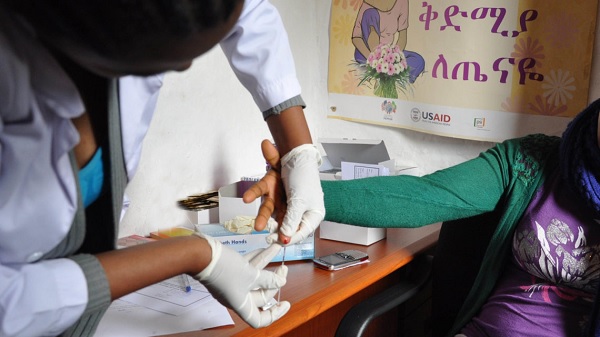
The results of clinical trials conducted in Ethiopia by the Drugs for Neglected Diseases initiative (DNDi), in partnership with Médecins Sans Frontières (MSF), the University of Gondar, and Addis Ababa University, open the way for more effective and safer treatments for people with both HIV and visceral leishmaniasis (VL), a group of patients who have historically suffered from poor treatment options. The results were published today in PLOS Neglected Tropical Diseases.
Visceral leishmaniasis (also known as kala-azar), with up to 90,000 cases estimated in Asia, Africa, and South America, is the second largest parasitic killer after malaria, with 20,000-30,000 deaths every year. HIV affects visceral leishmaniasis by altering its severity, worsening treatment outcomes and relapse rates, and increasing the risk of death. Co-infection remains prevalent in several parts of the world, notably in North-West Ethiopia, where 20 to 40% of visceral leishmaniasis cases occur in people living with HIV.
“The region has the highest global burden of visceral leishmaniasis in people living with HIV. Young workers in Ethiopia, who have migrated to the lowlands for seasonal work and are at risk of contracting HIV, are also exposed to sandfly bites that cause visceral leishmaniasis as they sleep in improvised shelters,” said Dr Jorge Alvar, Senior Advisor on Leishmaniasis at DNDi. “There is an urgent need for better treatment and outcomes for this seriously ill and neglected population.”
Current World Health Organization (WHO) guidelines recommend the treatment of HIV/VL co-infection with liposomal amphotericin B (often better known as AmBisome, the brand name of the drug produced by Gilead), but the recommendations lack proper evaluation in most endemic areas.
Between 2011 and 2014, the international medical humanitarian organization MSF began using a compassionate use regimen, combining AmBisome with the oral drug miltefosine in Abdurafi Health Centre in North-West Ethiopia.
“The medical imperative was to reduce the alarmingly high treatment failure rates, so we tried something new,” said Dr Koert Ritmeijer, Neglected Tropical Diseases Advisor at MSF. “Based on our experience treating more than 150 patients in routine care at Abdurafi Center, the results were very encouraging, but needed confirming in controlled clinical studies.”
To provide the needed scientific evidence, DNDi ran a Phase III study, starting in 2014, testing both AmBisome monotherapy (40 mg/kg) as per current WHO and international recommendations, and a combination of AmBisome infusion (30 mg/kg) and miltefosine orally for 28 days (100 mg/day) in 58 HIV/VL patients in two sites in Ethiopia.
◌ ALSO READ: Mobile workers in north Ethiopia vulnerable to visceral leishmaniasis transmission
Results demonstrated the high efficacy of the combination therapy, with 67% cure rate when treatment lasted 28 days, and increased to 88% cure rate when patients who were not cured received a second round of treatment to clear Leishmaniaparasite, with a full treatment lasting 58 days.
“Considering the individual and public health benefits, there is a strong case for the prompt adoption of this treatment in international and national guidelines,” said Dr Alvar. “The results also suggest a new case management strategy is needed, whereby using one or two rounds of treatment depends on whether negative parasitology has been achieved.”
The DNDi clinical trial was financed by European Union (EU FP7); the Swiss Agency for Development and Cooperation (SDC), Switzerland; Médecins Sans Frontières; UK Aid; the Federal Ministry of Education and Research (BMBF) through KfW, Germany; the Medicor Foundation, Liechtenstein; and other private donors.
Source: DNDi (dndi.org)
